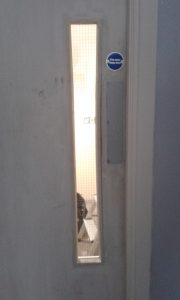
This month we stay with the housing theme. This wasn’t actually my intention, there are other subjects for contention, but it seems problems with fire doors in blocks of flats just won’t go away.
This time the issue at hand is the outcome of a programme of works to replace fire doors in common areas. The inspection revealed not even a single one to be compliant and the housing provider faces the headache of getting the job done again. This time correctly.
Cause and effect?
As usual, problems start at the beginning. The specification requested hinges to BS 7352 and locks to BS 5872 as well as a fire door for which the performance certification was withdrawn a few years ago. All of these were required to be installed in accordance with BS 8214:1990.
Most readers here will know that these standards were replaced with BS EN 1935 in 2002 and BS EN 12209 in 2003. I expect most will know that the 1990 version of BS 8214 was superseded in 2008 and again in 2016 by new versions.
Does this matter? Surely a competent fire door installer would fit the correct door hardware to the latest standards and undertake the work compliant with product certification requirements and with the current standards. But maybe it’s yet another demonstration of a lack of knowledge that stretches, top to bottom, across the construction industry. Personally, I don’t believe providing an out-of-date specification necessarily means the job has to go wrong but if you throw in an installation contractor that has no specialist knowledge and who, like many it seems, is motivated mainly by price then yes it’s likely to end badly.
Will he seek advice from an architectural ironmonger or will he buy his door hardware, online or perhaps from a general builders merchant? If the answer is the second one (or maybe even the third one) he can easily and unknowingly install a non-compliant fire door. An example could be a self-closing device that is power-size 3 to BS EN 1154, fire-tested to BS EN 1634 and has third-party product certification, but when installed with the parallel-arm bracket (figure 66 in Architectural Ironmongery parlance) fails to meet the fire performance certification requirements. Easily done?
In this instance, the fire door inspection revealed that the installers lacked the specialist knowledge to fit fire doors correctly. All the usual suspects were present:
Excessive perimeter gaps, ineffective smoke seals, poor door-to-frame alignment, over-morticing of hardware, non-fire-rated mortice locks and excessive trimming of the door edges. This time I won’t go into detail because it would pretty much be a repeat of last month’s blog on the replacement of flat entrance doors in blocks of flats. What I am more interested in is what can be done to stop this from happening time and again.
Groundhog Day
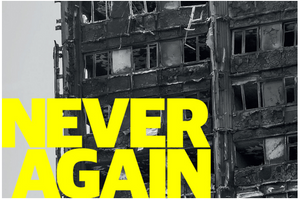 There’s a common theme when it comes to inspections of newly installed fire doors. Generally the products, apart from locks, are fire rated. The hinges are nearly always compliant, although sometimes fitted the wrong way up. The self-closer can be tricky, often as a result of a lack of knowledge at the survey stage but usually, a compliant one has been fitted, even though the door often fails to self-close.
There’s a common theme when it comes to inspections of newly installed fire doors. Generally the products, apart from locks, are fire rated. The hinges are nearly always compliant, although sometimes fitted the wrong way up. The self-closer can be tricky, often as a result of a lack of knowledge at the survey stage but usually, a compliant one has been fitted, even though the door often fails to self-close.
The door is always a fire door but not necessarily the most suitable core construction type for the job and often too much has been cut from one or more edges. The door frame is usually a certificated one but I have found that locks appear to be a problem even though there’s no problem with the availability of fire-rated mortice locks of the correct lock case and forend dimensions. This common theme clearly points to a lack of knowledge at various levels.
Who, what and where?
These photographs (pictured down the right-hand side of this page) of newly installed fire doors do not require much in the way of commentary.
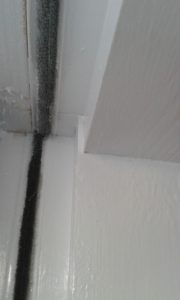
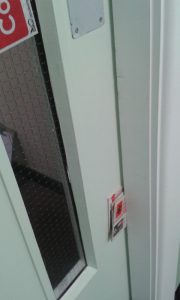
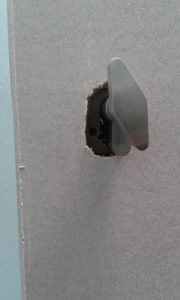
The work is clearly not acceptable and reminds us of the widely reported case of problems with newly installed fire doors at eleven blocks of flats in Stoke on Trent. Back in 2013, FDIS reported that “A report commissioned by Stoke on Trent council revealed that there were problems with 66 of the fire doors that had recently been installed at 11 blocks of council flats. The story was covered widely in the media including trade press articles and on the BBC’s website and it was also debated within the FDIS LinkedIn group”.
The article went on to say “Whether the problems were caused by the contractor’s competence, poor maintenance, poor specification or other issues remains to be determined. Whatever the outcome, this story certainly emphasises the need for accountability from the selection of appropriate fire doors, through installation and maintenance, to day-to-day responsible use to ensure that fire doors are effective”.
Four years later there is still just as much doubt about the quality of fire door installation. In an article talking about investigations post-Grenfell Tower the online magazine Inside Housing recently reported that “The consensus is that failings at Grenfell Tower must have been numerous for the effects of the fire to have been so catastrophic. Flammable cladding cannot fully explain the devastating speed with which the fire spread from floor to floor, and most experts agree that internal problems will become significant as more information emerges”.
So, clearly, we are long overdue in taking effective action to address this issue. The expert fire safety panel chaired by Sir Ken Knight will surely make recommendations about the installation and signing-off of fire safety products like fire doors. At the very least, in buildings with sleeping accommodations?
Competence
These days any fire door placed on the market must have evidence of fire performance so we have products that have been tested or assessed to provide commonly 30 or 60 minutes of protection. That is a heck of a lot of performance, half an hour or one-hour fire protection provided by a 44mm or 54mm thick timber door and the compatible hardware so it must follow that there’s no room for what the residents at a Stoke on Trent block of flats recently called ‘shoddy’ installation work.
Surely it must follow and should not require articles such as this one to point out that the installation of life-safety products requires a degree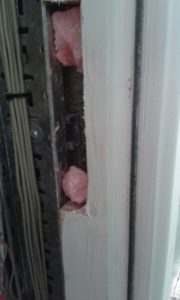 of competence. This is not just about the guy holding the chisel. It starts with the specifier and the surveyor. They have a responsibility to select suitable door leaves and hardware and to measure the structural openings allowing for adjacent walls and bulkheads that may have an effect on installation work.
of competence. This is not just about the guy holding the chisel. It starts with the specifier and the surveyor. They have a responsibility to select suitable door leaves and hardware and to measure the structural openings allowing for adjacent walls and bulkheads that may have an effect on installation work.
The installer has a duty to carry out the work in accordance with instructions and his managers have a duty to ensure he has the necessary competencies to do so.
The client will be the one ultimately responsible for fire safety at the building so he should inspect the work both whilst ongoing and when completed. The Grenfell tragedy seems to have had an effect, recently I have been contacted by installation contractors required (by their client) to provide third-party inspections to confirm that their fire door installation work is compliant.
This is progress (necessity is the mother of invention) and should be noted by the expert panels tasked with making recommendations for improvements in fire safety. Third-party certification schemes already exist, training courses are available, the Fire Door Safety Week team are working on a vocational course and the recently published ‘BS EN 16763:2017 Services for fire safety systems and security systems’ is intended to create a common understanding for a minimum service level. So with the availability of inspection services, third-party schemes and training programmes there’s every reason to expect standards of fire door installation and maintenance to improve.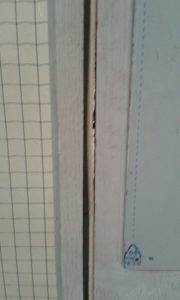
Inside Housing has launched a campaign to improve fire safety.
What next?
Generally speaking, it appears we listen only to enforcement and not to guidance. So if improvements are to be achieved, I believe it will take legislation to introduce prescriptive regulations that require minimum standards to be met in terms of installation and maintenance of fire safety products. This would, I expect, require measures to inspect the works on-site and a formal signing-off process.
Would that be a sensible and necessary step or just a more burdensome regulation destined for the bonfire of red tape? This, of course, is why we have a panel of fire safety experts carefully examining the evidence of both effective and defective fire safety measures. And, not least, why their findings and recommendations will be so important.
